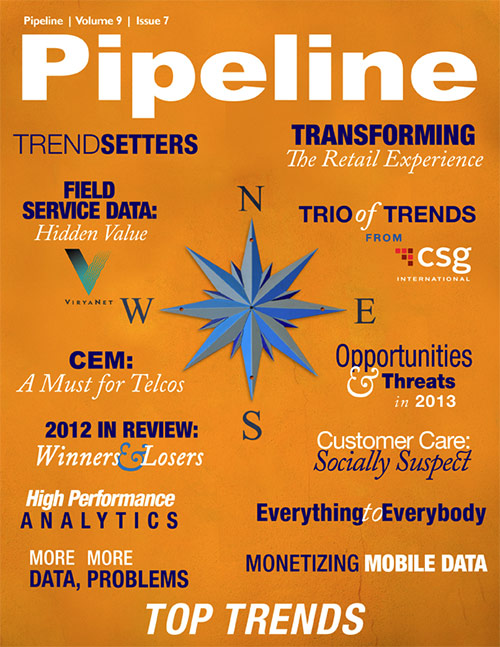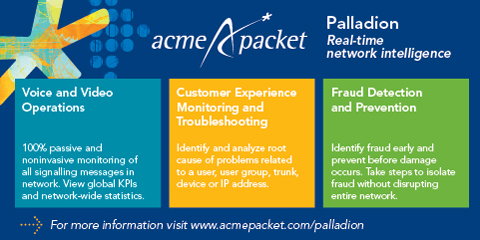Telecommunications Service Providers Make Good on Service Innovation
More first time car buyers are weighing the "connected experience" when making first-time car buying decisions.
Sprint made headlines at the end of November with the launch of Sprint Velocity at the 2012 Los Angeles Auto Show. A week later at Management World Americas, Pipeline had an opportunity
to sit down and chat with Tom Nelson, director of marketing for Global Wholesale & Emerging Solutions at Sprint. He talked about how his company is going beyond connectivity to focus instead
on the value that connectivity can provide.
“The apparent value of the connected car [is in] things like in-car connectivity for Wi-Fi and infotainment, but what’s interesting to me are the things that are not apparent,” said Nelson. “For
example, today when someone makes a sizable investment in their car, their customer service experience equates to receiving a postcard that estimates what service may be required based on an
estimation of their mileage.
“But just think about the possibility and opportunity dealerships have by gathering meaningful data and using it to enhance the customer experience based on actual usage, service needs and things
that enrich the relationship. What if the dealership could send a real-time notification when it noticed fuel efficiency has degraded, with a solution that would increase fuel efficiency by 5
percent and included a Groupon for the service and a free cup of coffee? Just think of the impact this would have on the relationship between you and your car dealer.”
Nelson went on to talk about how this trend now seems to be driven by the consumer. Whereas in the past this may have been more of a top-down enhancement by luxury brands, these days more
first-time car buyers are weighing the “connected experience” when making decisions.
Mobile money
New strides in mobile banking are evident everywhere you look, from food-truck gourmands to flea-market moguls and farmer’s-market supply-chain managers. With those handy little card swipers,
mobile money has literally turned the world into a limitless marketplace.
Telecommunications companies across the globe are partnering with (or outright acquiring) banks and looking to leverage the ubiquitous connectivity of daily life to create a replacement for the
back-pocket wallet. For instance, this year Mobile TeleSystems, the leading telecommunications operator in Russia and the Commonwealth of Independent States (CIS), announced its plans to
purchase a stake in the Moscow Bank for Reconstruction and Development (MBRD), now known as MTS Bank. This transaction opened up the financial market for MTS to its nearly 70 million
customers in Russia.
Not surprisingly, emerging markets without an established, mature banking system are the ones with the most potential for mobile financial services. Berg Insight predicts 381 million active
mobile-money users in emerging markets by 2017.
Several of the most successful mobile-money services today are in use in Africa, but Asia-Pacific is expected to become the most important regional market, accounting for nearly two-thirds of
the active user base in 2017, according to the Berg report. Mobile money has a central role in extending the reach of formal financial services to the unbanked and financially underserved
populations in emerging markets. The mobile phone will also be the primary self-service ​banking​ channel for a substantial share of the already banked individuals.





















